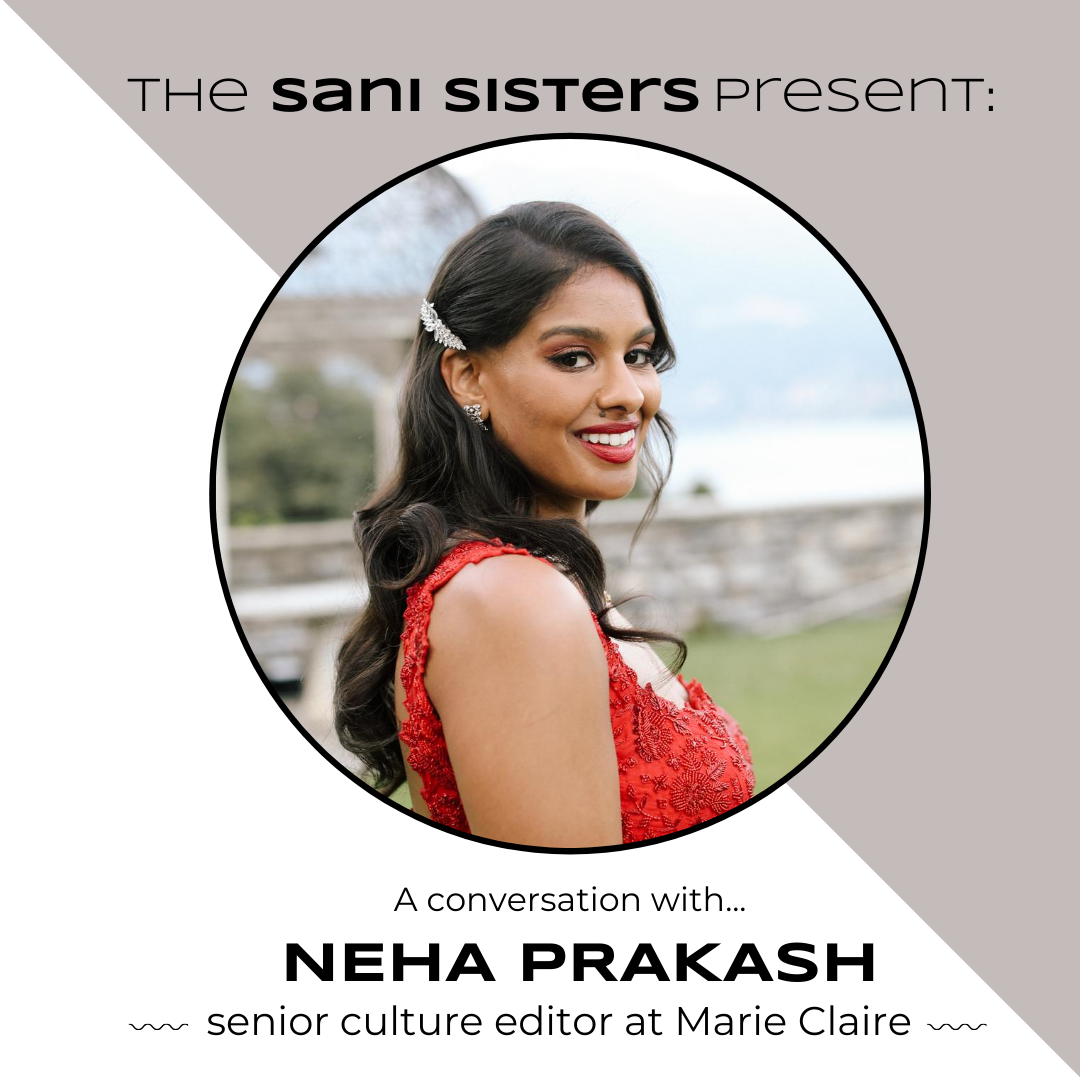The Sani Sisters Present: Neha Prakash
By Praveena Somasundaram
From reporting on entertainment, pop culture and politics to having a destination wedding covered by Vogue, Marie Claire’s Neha Prakash has made many waves. The senior news and culture editor spoke with Sani co-founders, Niki and Ritika Shamdasani, about fashion, journalism and representation in media during a “Sani Sisters Present” session.
Prakash started as an editor at Marie Claire three weeks before lockdowns began in New York due to coronavirus.
“This reality is kind of the only reality I’ve known with this job,” she said.
Even before the pandemic, Prakash said no two days as a journalist were the same.
“That’s one of the reasons I really got into being a journalist,” Prakash said. “I knew I didn’t want to ever sit at a desk and have the same thing to do every day.”
As a little kid, she’d wanted to be a Bollywood actress. Growing up with Bollywood cinema and Indian pop culture influenced Prakash’s interest in journalism.
“I really wanted to write about entertainment and write about celebrities, so that’s kind of how I got into my job,” she said.
Since COVID-19 limited or temporarily shut down industries including film and art, covering culture has drastically changed. Prakash also noted that the journalism industry, magazines in particular, had struggled even before the pandemic. Data from the Pew Research Center between 2011 and 2015 showed that average single copy sales of news magazines had decreased. But digital subscriptions for news magazines continued to rise.
“The ones that have really survived and thrived have been the ones that have been the most creative and the most adaptable,” Prakash said.
With the current social justice movement happening around the world, the field of journalism, like many others, has had to reckon with problems of diversity and inclusion. This is something Prakash is acutely aware of as a South Indian journalist.
“I think that something that I've always been really cognizant as a woman of color in a newsroom is just making sure that I'm telling stories about people from different backgrounds,” she said. “And making sure we’re using writers also from different backgrounds and making sure there's that representation.”
Recent shows like Mindy Kaling’s Never Have I Ever recently allowed South Asian culture a more prominent spotlight in Hollywood. Prakash said fashion in particular plays a role in shaping entertainment, and South Asian fashion is appearing more and more on the big screen.
“Everyone's favorite TV shows and movies, the ones that really stand out and leave a lasting impression, are the ones where they’ve spent a lot of time and money usually building that world,” Prakash said. “And a lot of people think that has to do with set design or the CGI or something, but a lot of it just comes down to the costumes of it all, and how much attention to detail they’re paying.”
For aspiring journalists and writers, Prakash encouraged pitching. With hope to respond to as many freelance pitches sent to her as possible, Prakash recommended unique, straight-forward and well-researched proposals.

